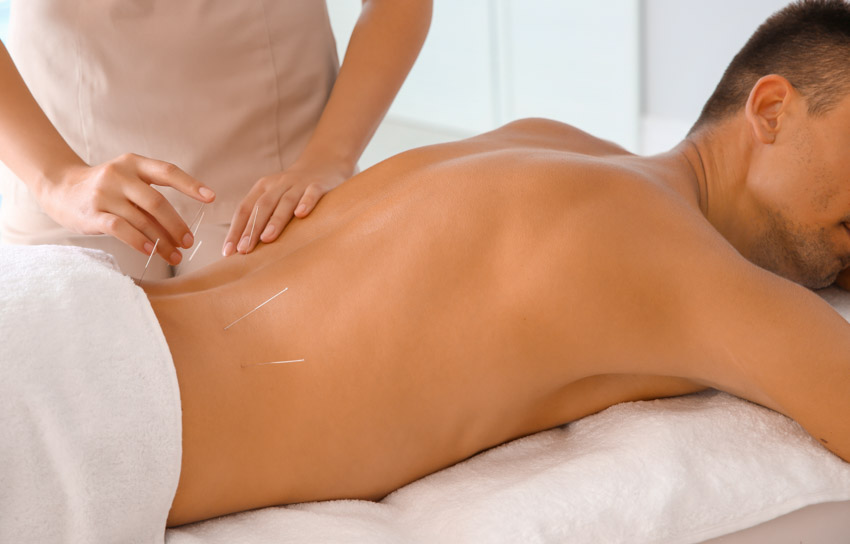
Acupuncture is effective for the alleviation of sciatica. Guangzhou Zengcheng Hospital of Traditional Chinese Medicine researchers conducted a randomized clinical trial and determined that warm needle acupuncture achieves a 96.15% total effective rate. [1] In a comparison of treatment protocols, two types of acupuncture were compared. Two groups received identical treatments using electroacupuncture; however, one group also received warm needle acupuncture via moxibustion. Warm needle acupuncture produced a 96.15% total effective rate compared with unheated needles, which achieved a 69.23% total effective rate.
The researchers used the following study design. Fifty-two patients were admitted into the hospital. Patients were randomly divided into an observation group and a warm needle acupuncture group, with 26 patients in each group. Within the observation group, 14 patients were males and 12 were females. Age range was 46 to 68 years. The mean age was 54.28 ±3.52 years. These 26 patients had a course of disease of 1 to 5 years. For the warm acupuncture group, 11 patients were males and 12 were females. Age range was 46 to 69 years. The mean age was 54.30 ±3.57 years. The course of disease averaged 3.27 ±0.31 years.
All patients met the inclusion criteria of sciatica. Exclusion criteria were as follows: functional disorders with impairment of vital organs, malignant tumors, infectious diseases, pregnancy, and orthopedic diseases. Both groups received electroacupuncture. Manual acupuncture was applied first. Mild reinforcing-attenuating technique (ping bu ping xie) was administered.
After achieving a deqi sensation, needles were connected to an electroacupuncture device with a continuous wave (50 Hz). This session lasted for a duration of 30 minutes and the whole treatment procedure contained 10 sessions. Filiform needles of 0.35 × 25 mm were used on the following acupoints:
- BL40 (Weizhong)
- BL23 (Shenshu)
- BL25 (Dachangshu)
Filiform needles of 0.35 mm × 50 mm were used on the following acupoints:
- GB31 (Fengshi)
- BL54 (Zhibian)
- GB30 (Huantiao)
One group was provided with needle warm acupuncture on the acupuncture needle handles. Moxibustion cuttings were changed every 15 minutes. Sessions lasted for 30 minutes. Treatment efficacy for each patient was classified into 3 categories:
- Significantly effective: absence of radiating pain on the waist, hips, and legs combined with flexible movement of body.
- Effective: significant relief of radiating pain, normal movement of the body.
- Not effective: no visible relief of pain, impairment of physical movement.
Among the 26 cases in the warm needle acupuncture group, 10 cases were significantly effective, 15 cases were effective, 1 case was ineffective, yielding a total effective rate of 96.15%. However, the total effective rate in the control group was 69.23 %.
The results show that warm needle acupuncture is a safe and effective treatment option for sciatica patients. The researchers note that sciatica can is categorized as bi disease (痹症), based on traditional Chinese medicine principles. An integrated treatment regimen of acupuncture and moxibustion activates the qi and blood and also regulates the meridians and collaterals. They add that prior research shows that moxibustion plays a role in reducing inflammation for patients with sciatica. [2]
The Healthcare Medicine Institute provides an acupuncture continuing education course for stateCEUs, NCCAOM PDAs, and international credits on the topic of lower back pain and sciatica. To learn more, take a look at the Low Back Pain online course.
References
[1] Research on the clinical efficacy and security on warm acupuncture in treating sciatica, Ye Weihan, Zeng Weiquan, Shenzhen Journal of Integrated Traditional Chinese and Western Medicine, August 2020.
[2] Assessment of the clinical efficacy and security on warm acupuncture in treating sciatica, Hupeng, China Prac Med, December 2017.


